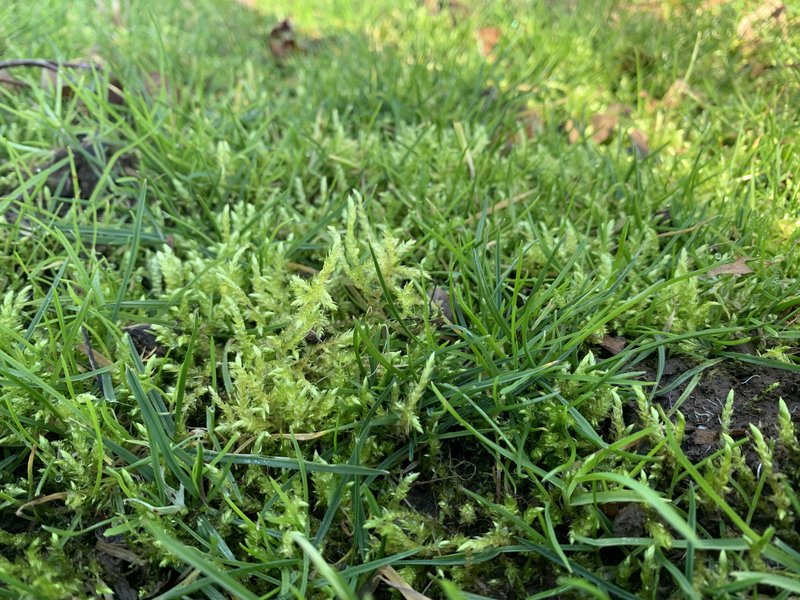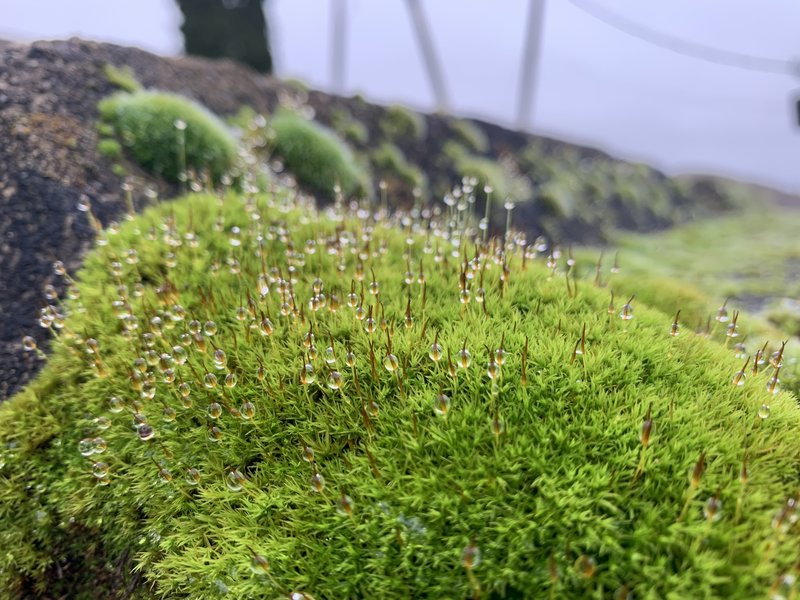Those trying to grow turfgrass in these wet and shaded areas battle this weed frequently. Moss persists throughout the winter, while in the summer months the plant dries and becomes dormant until environmental conditions are favorable again. While there are many species of moss that can be found affecting turfgrass, the most common culprit is silvery-thread moss (Bryum argenteum Hedw.).
 PC: Emily Braithwaite
PC: Emily Braithwaite
The majority of weeds are vascular, meaning water and nutrients are free-flowing in the plant, however, mosses are non-vascular plants that do not have root systems and rely on water in the environment. Mosses can reproduce sexually via sporophytes or asexually by sprouting new shoots from a pre-existing moss infestation or by bulbils. Due to its persistence, moss can become a serious problem if left unmanaged.
 PC: Emily Braithwaite
PC: Emily Braithwaite
Turfgrass managers use a variety of common cultural practices to control moss, like alleviating shade from trees, aerating the soil, increasing the mowing height, irrigating deeply and infrequently, neutralizing acid in the soil with lime, replacing the current turfgrass stand with a more shade tolerant species, and maintaining a fertility program to control moss. If cultural practices have been employed and are deemed ineffective at managing the moss population, chemical control can be utilized. Most moss control products found at gardening stores contain iron or salts. Research has shown that fertilizers with iron will significantly decrease moss and enhance turfgrass growth, however you should research on how a complete fertilizer (nitrogen- phosphorus- potassium) can control pre-existing moss.
In conclusion, it is best to promote a healthy, full stand of turf that can suppress the growth of moss and other weeds. By properly managing turfgrass with irrigation, fertilization, and mowing, moss will become a problem of the past.
Bibliography:
Burnell, K. D., Yelverton, F. H., Neal, J. C., Gannon, T. W., and McElroy, J. S. (2004). Control of Silvery-Thread Moss (Bryum argenteum Hedw.) in Creeping Bentgrass (Agrostis palustris Huds.) Putting Greens. Weed Technology, 18(3): 560-565.
Raudenbush, Z, Keeley, S. J., and Stark, L. R. (2015). A Review: Establishment, Dispersal, and Management of Silvery-Thread Moss (Bryum argenteum Hedw.) in Putting Greens. Crop, Forage & Turfgrass Management, 1(1): 1-9.



 PC: Emily Braithwaite
PC: Emily Braithwaite PC: Emily Braithwaite
PC: Emily Braithwaite